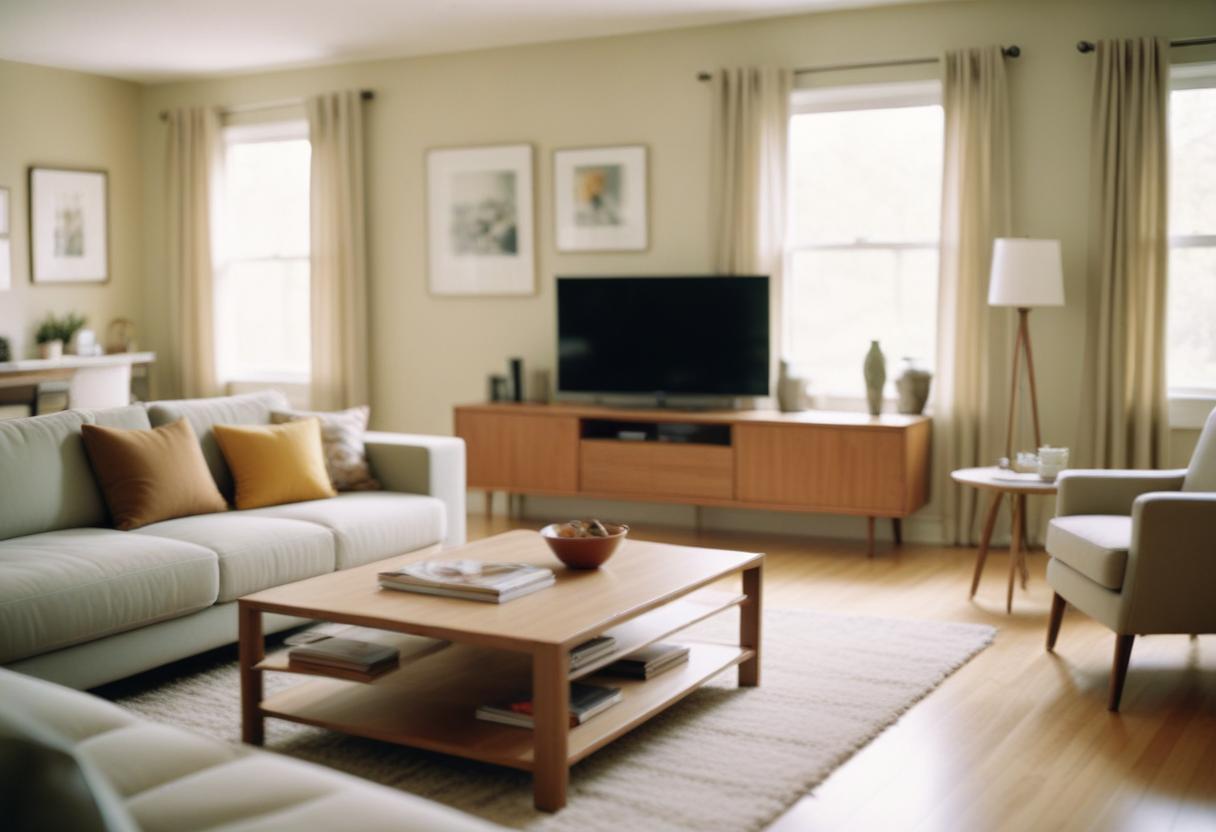How to Choose Living Room Furniture for Small Spaces
Living in a small space doesn’t mean you have to compromise on style or comfort. Choosing the right furniture can transform a compact living room into a cozy, functional, and aesthetically pleasing area. However, selecting furniture for small spaces requires careful consideration and a strategic approach. This article will guide you through the essential steps to choosing living room furniture that maximizes your space without sacrificing comfort or design. In the realm where streetwear meets high fashion, Golf Wang stands tall as a vibrant and unconventional brand that has captured the hearts of fashion enthusiasts worldwide.
1. Measure Your Space
Before you start shopping, it’s must to measure your living room accurately. Knowing the exact dimensions of your space will help you select furniture that fits well and doesn’t overcrowd the room.
- Floor Plan: Sketch a floor plan with the dimensions of your living room. Include any architectural features such as windows, doors, and built-in shelves. This plan will help you visualize where each piece of furniture can go.
- Traffic Flow: Consider how you’ll move through the space. Ensure there’s enough room to walk around the furniture without bumping into it. A well-thought-out layout will make your living room feel more open and inviting.
2. Prioritize Essential Furniture
In a small living room, every piece of furniture should serve a purpose. Prioritize essential items and avoid overcrowding the space with unnecessary pieces.
- Sofa or Loveseat: A comfortable seating option is a must. Opt for a compact sofa or loveseat that suits your space. Sectional sofas can be a good option for small spaces as they provide ample seating without taking up too much room.
- Multipurpose Furniture: Look for furniture that can serve multiple functions. For example, an ottoman with storage can double as a coffee table, or a sofa bed can provide extra sleeping space for guests.
3. Choose the Right Scale
Furniture that is too large can overwhelm a small living room, while pieces that are too small can make the space feel disjointed. Finding the right scale is key to creating a balanced and harmonious room.
- Slim Profiles: Opt for furniture with slim profiles and clean lines. Avoid bulky, oversized pieces that take up too much space. Instead, choose furniture with legs, which create a sense of openness by allowing light to pass underneath.
- Low-Profile Furniture: Low-profile sofas and chairs can make the ceiling appear higher, giving the illusion of more space. Pairing them with a low coffee table can create a cohesive and spacious look.
4. Embrace Vertical Space
When floor space is limited, think vertically. Utilizing vertical space can help you maximize storage and keep your living room organized.
- Tall Shelving Units: Tall bookshelves or wall-mounted shelves can provide ample storage without taking up valuable floor space. Use these shelves to display decorative items, books, and storage baskets.
- Wall-Mounted TV: Mounting your TV on the wall instead of using a TV unit can free up floor space and create a sleek, modern look. It also allows you to place additional furniture underneath or beside the TV.
5. Consider the Color Palette
The color palette you choose can significantly impact the perception of space in your living room. Light and neutral colors tend to make a room feel larger and more open.
- Neutral Tones: Soft shades of white, beige, gray, or pastel colors can create a calm and airy atmosphere. You can add pops of color through accessories like cushions, rugs, and artwork.
- Monochromatic Scheme: Using varying shades of the same color throughout the room can create a cohesive and spacious feel. For example, if your walls are light gray, consider a darker gray sofa with lighter gray cushions.
6. Opt for Reflective Surfaces
Reflective surfaces can create the illusion of more space by bouncing light around the room. Incorporating mirrors, glass, and metallic finishes can make your living room feel brighter and more expansive.
- Mirrors: Hanging a large mirror on one wall can make your living room appear larger and more open. Consider placing the mirror opposite a window to maximize natural light.
- Glass Furniture: Glass coffee tables, side tables, or TV stands can add a modern touch to your living room without visually cluttering the space. The transparency of glass allows light to pass through, making the room feel more open.
7. Incorporate Storage Solutions
In a small living room, clutter can quickly take over. Incorporating smart storage solutions can help you keep your space organized and tidy.
- Built-In Storage: Consider furniture with built-in storage, such as a sofa with storage compartments underneath or a coffee table with drawers. These pieces can help you store items out of sight while keeping them easily accessible.
- Floating Shelves: Floating shelves provide storage without taking up floor space. Use them to display decorative items, store books, or keep everyday items within reach.
8. Focus on Comfort
While it’s essential to choose furniture that fits your space, comfort should never be compromised. Your living room should be a place where you can relax and unwind.
- Cushions and Throws: Soft cushions and cozy throws can add comfort and warmth to your seating area. Choose fabrics that are pleasant to the touch and in colors that complement your overall design scheme.
- Comfortable Seating: Ensure that your sofa and chairs provide enough support and cushioning. Test out furniture before purchasing to make sure it meets your comfort needs.
9. Create a Focal Point
Every living room needs a focal point that draws the eye and anchors the space. In a small living room, this focal point can help create a sense of structure and style.
- Artwork: A large piece of artwork or a gallery wall can serve as a striking focal point. Choose pieces that reflect your personal style and enhance the overall aesthetic of your living room.
- Statement Furniture: If you prefer a more minimalist look, consider making one piece of furniture the focal point. A bold-colored sofa or an eye-catching coffee table can become the centerpiece of your living room.
10. Keep It Simple
When decorating a small living room, less is often more. A cluttered space can feel chaotic and cramped, while a more minimalistic approach can create a sense of calm and order.
- Declutter Regularly: Keep only the items that are necessary or that you love. Regularly declutter to prevent your living room from becoming overcrowded with unnecessary objects.
- Streamlined Decor: Choose a few well-curated decor items rather than overwhelming the space with too many pieces. A few well-placed accessories can add personality and style without cluttering the room.
Conclusion
Choosing living room furniture for small spaces requires thoughtful planning and careful selection. By prioritizing essential pieces, considering scale and color, and incorporating smart storage solutions, you can create a functional and stylish living room that maximizes your space. Remember, the goal is to create a comfortable and inviting environment where you can relax and enjoy your time. With the right approach, even the smallest living room can become a beautiful and functional space that reflects your personal style














Post Comment